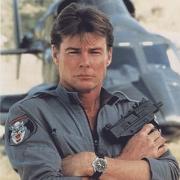I think I read once that a police force did an experiment where they had recruits train on firearms in two conditions:
1. 22 LR SW revolvers equivalent in size to their 38s, then transition
2. Start with the 38s from the beginning.
The results were that #2 was a better procedure as you didn't get negative transfer from the 22s being so light. This is a vague memory and I didn't save it
Anybody recall or heard of this?



 Reply With Quote
Reply With Quote


